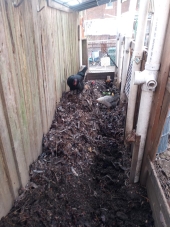Howdy Hunter! I'm not too far from you, just NW of the DFW metro.
East of Dallas, we get into that 'black gumbo' soil; great for cotton, miserable to walk through in the rainy season, and not well suited to cob unless you dig right under it to get your material.
Here's a pretty good map of Texas soil, and
here's a much more in depth one.
It sounds like you have a lot of drive to do this! That's great, especially for the earlier, exploratory stages of something like this.
Here's some of the book recommendations I would have for you:
The hand-sculpted house, by Ianto Evans
The cob builders handbook, by Becky Bee
the cobber's companion, by Michael G Smith
Other thoughts:
My understanding is that two stories with cob can be pretty challenging, and can require additional, non-cob structural elements. If you haven't built a structure, or especially built a structure with cob before, I would encourage you to get some of that under your belt before tackling a two story.
That being said, I love the idea of a lighter second story! A yurt type structure with
a reciprocal frame roof or similar would solve both your issues at once, and provide a really cool look both inside and out. Other options that I could see working there would be a straight yurt, light timber frame, maybe with mostly glass or paper for walls (thinking old school japanese architecture) or similar.
Whatever you decide on, one of the most important things for any earthen structure is 'a good hat and good boots': You want that roof to extend out far enough that rain nor sleet nor snow ever get to hit your walls.
For energy: almost all of Texas is great for wind and great for solar. The least challenging and most cost effective way to do either is often to hop off the house and set up on the ground nearby.
Another nice thing about the Lone Star State is that in a lot of areas of the state, there are very lax building codes, compared to other parts of the country. When I've looked at rammed earth or cob, my plans always included having a hollow running baseboard to run the electric through, and another to run water through. Last think I want to do is build a wall or foundation, then have to tear it down to get at a pipe or a circuit I buried.
Speaking of foundation! Have you given much thought to that? Foundations can be tough in our part of the state, due to the high clay content soils. I've always been a fan of
rubble trench foundations, for earthen walls. In the structures I've built, they've served me really well for that purpose.
Finally, have you thought about gradual building? My current plan is to start small, building a structure just large enough for our needs, and then expanding it as time and money allow.
Here's a thread with some cool thoughts on that process.
Hope this information is helpful!







